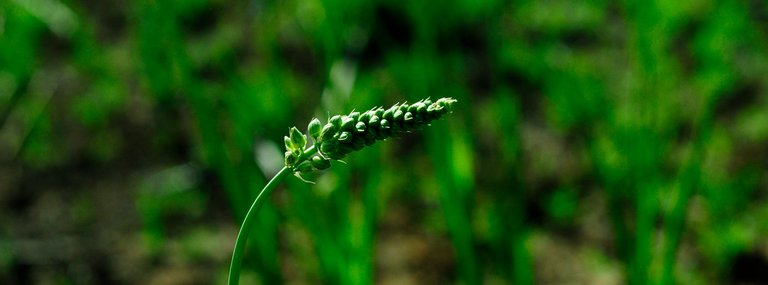Introduction: Images on the Wall
Plato's cave allegory is a well-known philosophical metaphor for the education process. Imagine a row of prisoners chained against a wall in such a manner that they cannot move their heads. They can only look in front of them. Now imagine behind them, various other people are walking over a bridge with a fire burning behind these people carrying various objects. The fire casts shadows of these objects on the wall for the prisoners to look at. These shadows or images on the wall are the reality of the prisoners.
One day, a prisoner manages to escape the cave. At first, he sees that the shadows, which were his reality for so long, were merely images, copies, artefacts, and thus illusions. As the prisoner walks further he sees an opening through which he steps. Outside of the cave, the prisoner's eyes first need to adjust to the new and bright world illuminated by the sun. As soon as his eyes adjust to the bright light, he realises that the shadows on the wall were twice removed from reality. The shadows were copies of a copy, and having now ascended out of the cave, he can see reality for what it is.
Going back down into the cave, with the intent to help the other prisoners, his eyes could not adjust fast enough. The prisoners on the wall saw new images and shadows which the escaped prisoner could not see because his eyes had not adjusted. The prisoners still chained to the wall mocked the prisoner that escaped because of his sudden inability to see the images on the wall. He could not convince the others to also break free from the cave.
Escaping the Cave as a Metaphor for the Process of Education
The dominant understanding of this metaphor is that it tells us about the process of education. At first, the cave symbolises the things that hold us back or the things that we need to break away from. But as we ascend to the top or out of the cave, we see that what we took as certain and transparent was not the case. But the more one escapes the cave, the brighter the light gets; the adjustment of the prisoner's eyes is painful to some extent. Education is not a pain-free experience. Leaving behind or amending one's beliefs due to gaining knowledge is a painful experience, especially if it were deep-seated beliefs. Descending back down the cave, the liberated prisoner wants to help the others so that they also experience the same liberation. But to his surprise the prisoners mock him. The reality is that dogmatic beliefs form a security that few would want to leave behind.
Building Education on the Back of Slaves
What is striking about this metaphor or allegory is how closely it resembles our current discourse; few educate themselves in order to ascend to Truth. They prefer the secure state of dogmatic beliefs, trusting others, and living in echo chambers in which painful transformation is absent. But it also mirrors our society in which education can only happen on the backs of slaves. Let me explain.
In an interesting article on this topic, the author Andrés Fabián Henao Castro writes about how the cave allegory should rather be read as being based on the Greek slave system that upheld Greek society. It is no secret that even in today's society, good education comes with a steep price tag. The fate of most is the menial blue-collar jobs that cannot pay for so-called quality education.
The implication of this is that education is only for a select few who can afford it. The educational system is built on a society that relies on blue-collar workers to uphold said society. These workers will never be able to afford education with their salaries.
Understanding the Liberated Prisoner as Naked and Disorientated
Reimagine the prisoners as those who would have escaped with the original prisoner but who cannot because they cannot afford it, or that the educational program excludes them because of language barriers or any other reason one can think of that plagues modern society. With the liberated prisoner comes back trying to tell the chained prisoners about liberation and education and sees the pure forms, they do not mock the liberated prisoner. Instead, they try to tell him about their reality, that they cannot pay the price for education, that they cannot understand the language in which education is offered, or that the conceptual frameworks are too far removed from their daily lives to even make sense. The reality of these prisoners does not allow them the fortunate escape of the liberated prisoner.
But one might also question the Naked and Disorientated prisoner. How does he know that the world outside of the cave is not yet another layer of illusion and copies? How does the so-called liberated prisoner, who now stands naked and disorientated in front of the other prisoners, know that the inside of the cave is a mere copy and not an alternative and equally valid reality? That is, why did the naked and disorientated assume that the outside of the cave is reality per se?
For all that the prisoners in the cave know, this naked old man who calls himself liberated is a snake oil salesman trying to sell a fake reality only he had the privilege of experiencing.
Postscriptum or Conclusion
The notion of a singular truth and reality discoverable by either science or religion is so ingrained into our reality that reality has become a singular idea. Reality is not multiplicity actualised through various experiences of multiple realities, no, according to the liberated prisoner there is a singular truth outside of the cave.
But the cave itself can have valuable truths, the cave itself might be a construct created to keep the slaves/prisoners locked up, and so on.
Truth is never with a capital "T" describing some universal reality, or so I claim. There is merely a bunch of smaller truths that make up our shared reality.
The writings in this post are my own, albeit inspired by various other authors and ideas floating in my head. If the work is not my own, I hyperlinked it. The photographs are also my own, taken with my Nikon D300.


